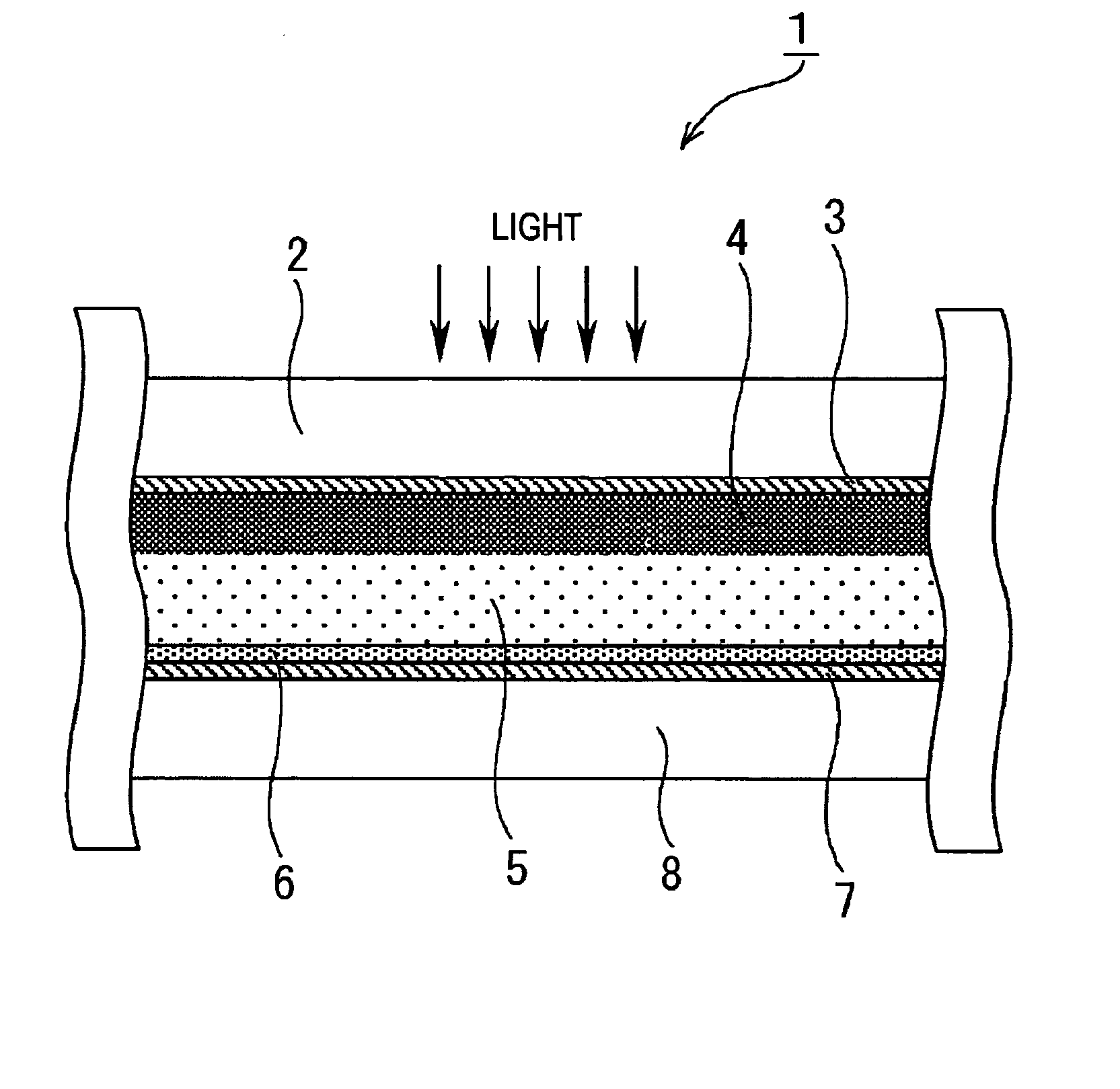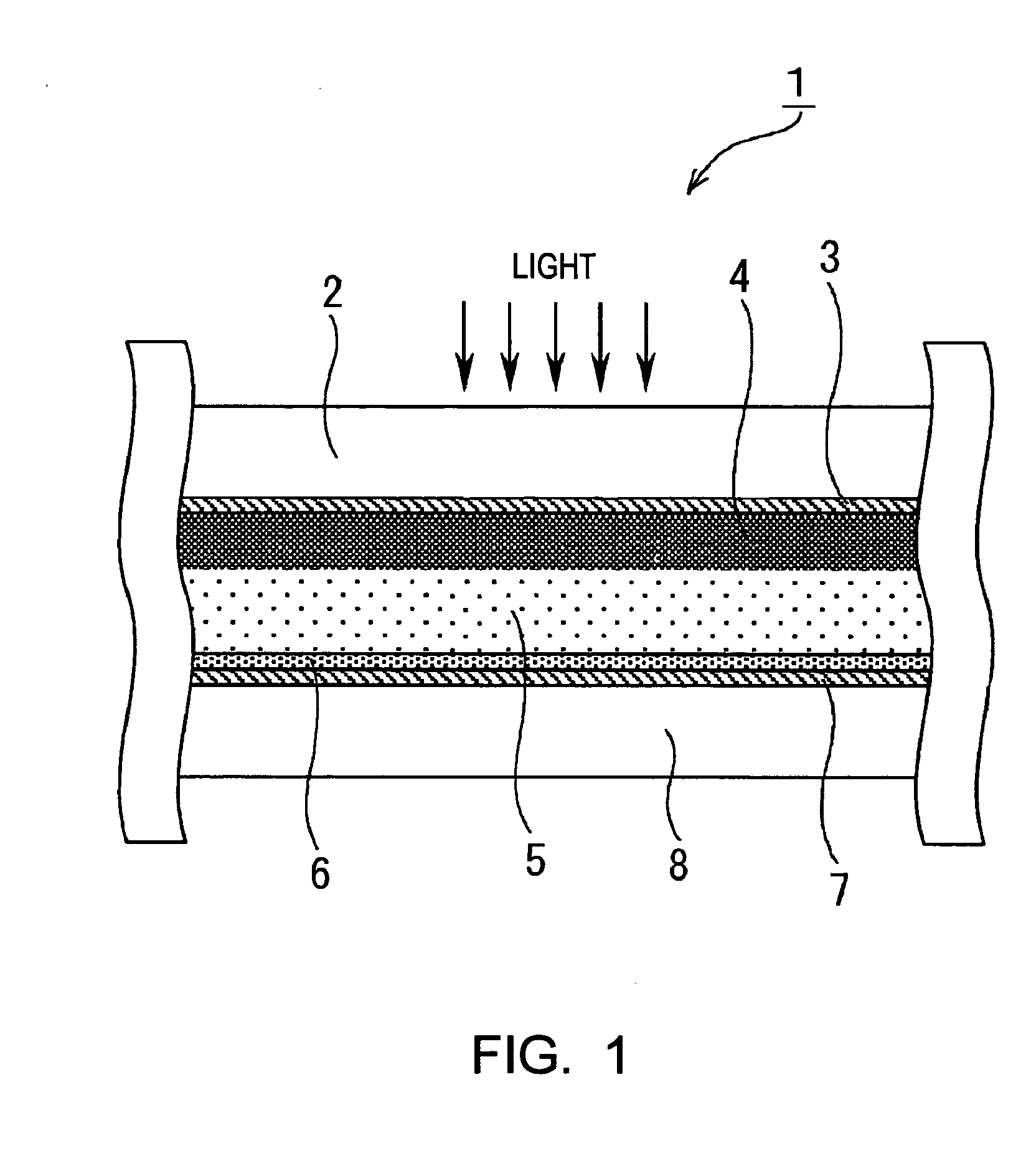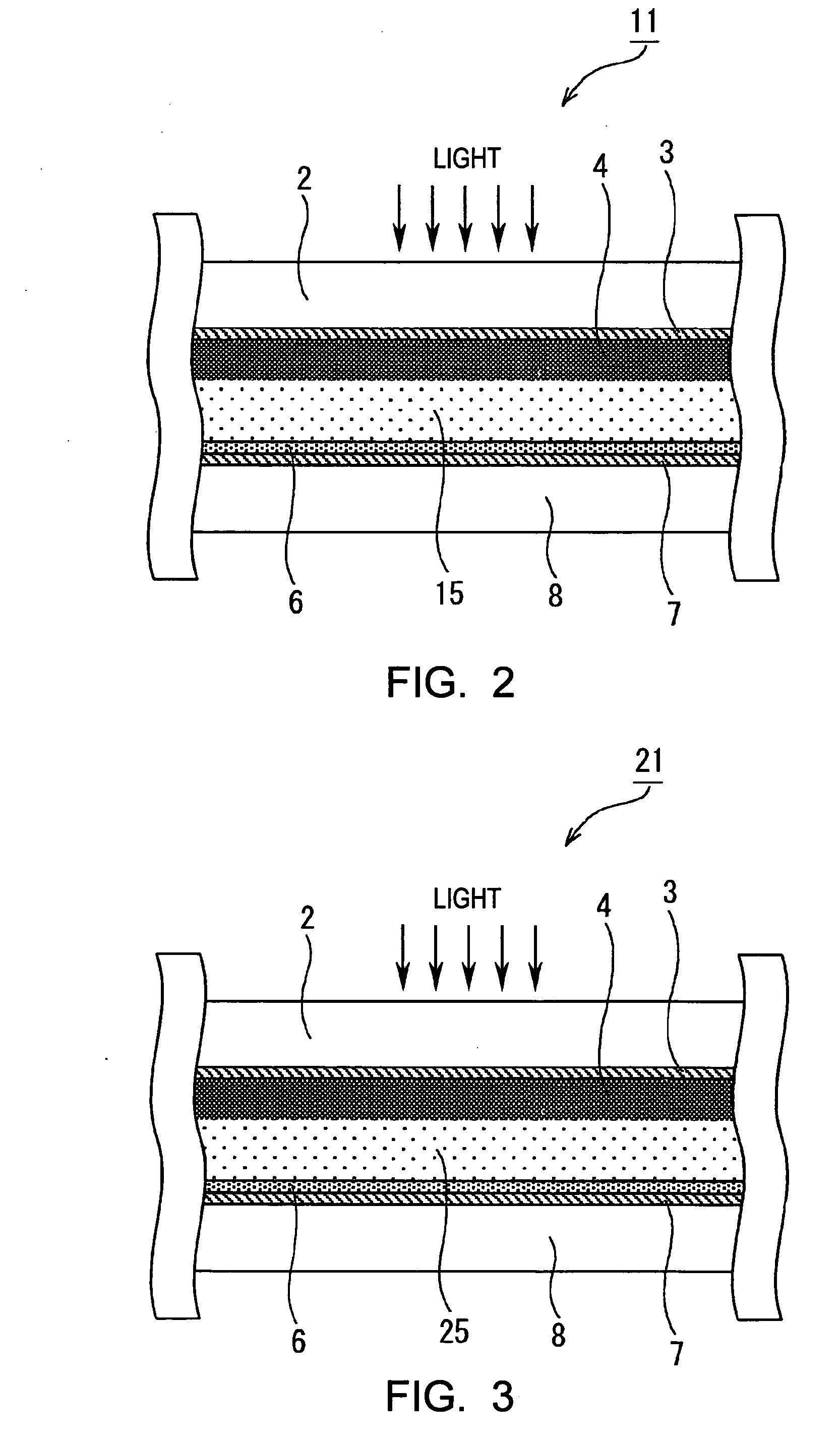Solid electrolyte, photoelectric converter and process for producing the same
a photoelectric converter and solid electrolyte technology, applied in the direction of non-metal conductors, sustainable manufacturing/processing, indirect fuel cells, etc., can solve the problems of low productivity, inconvenient production, and inability to meet the requirements of production, so as to achieve efficient and reliable formation
- Summary
- Abstract
- Description
- Claims
- Application Information
AI Technical Summary
Benefits of technology
Problems solved by technology
Method used
Image
Examples
example 1
[0166] In Example 1, as the photovoltaic device of the present invention, a dye-sensitized solar cell was formed as described below. First, a TiO2 paste was formed. The formation of the TiO2 paste was performed based on the information disclosed in “Novel Technique of Dye-Sensitizing Solar Cell” (CMC). First, 125 ml of titanium isopropoxide was dripped into 750 ml of an aqueous nitric acid solution at a concentration of 0.1 M while it was slowly stirred at room temperature. After the dripping was finished, the mixture thus formed was placed in a temperature-control oven at 80° C. and was then stirred for 8 hours, thereby forming a white translucent sol solution.
[0167] Next, after this sol solution was allowed to stand for cooling until the temperature thereof decreased to room temperature and was then filtrated using a glass filter, dilution was performed using a messflask, thereby forming a solution having a total volume of 700 ml. The sol solution thus formed was placed in an aut...
example 2
[0176] A dye-sensitized solar cell was formed in the same manner as that in Example 1 except that polyoxyethylene pentaerythritol (molecular weight of 1,600) was used as the second compound.
example 3
[0177] A dye-sensitized solar cell was formed in the same manner as that in Example 1 except that hexamethylene diisocyanate was used as the first compound.
PUM
| Property | Measurement | Unit |
|---|---|---|
| wavelength | aaaaa | aaaaa |
| particle diameter | aaaaa | aaaaa |
| particle diameter | aaaaa | aaaaa |
Abstract
Description
Claims
Application Information
 Login to View More
Login to View More - R&D
- Intellectual Property
- Life Sciences
- Materials
- Tech Scout
- Unparalleled Data Quality
- Higher Quality Content
- 60% Fewer Hallucinations
Browse by: Latest US Patents, China's latest patents, Technical Efficacy Thesaurus, Application Domain, Technology Topic, Popular Technical Reports.
© 2025 PatSnap. All rights reserved.Legal|Privacy policy|Modern Slavery Act Transparency Statement|Sitemap|About US| Contact US: help@patsnap.com



